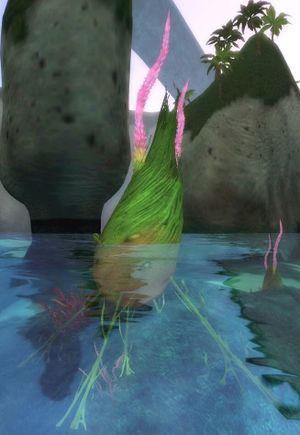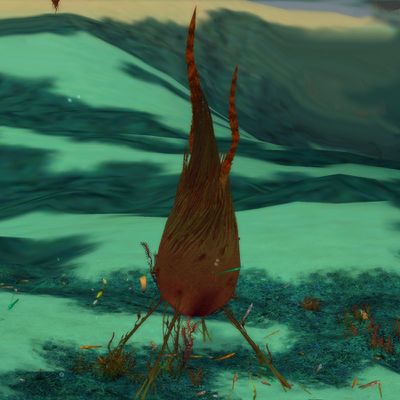Difference between revisions of "Wigweed"
From EncyclopAtys
m |
|||
| Line 5: | Line 5: | ||
|ENs=4 | |ENs=4 | ||
|ES=Wigweed | |ES=Wigweed | ||
| − | |ESs= | + | |ESs=3 |
|FR=Wigweed | |FR=Wigweed | ||
|FRs=0 | |FRs=0 | ||
| Line 33: | Line 33: | ||
|DE=1 | |DE=1 | ||
|EN=4 | |EN=4 | ||
| − | |ES= | + | |ES=3 |
|FR=0 | |FR=0 | ||
|RU= | |RU= | ||
Revision as of 12:45, 1 October 2019
Page proposed to the Lore of Ryzom
Latest edition: Zorroargh, 01.10.2019
| Taxonomic Amber | |
| Wigweed in summer | |
|---|---|

| |
| Kingdom | Plants |
| Category | Aquaplant |
| Main Ecosystem(s) | Lakes |
| Counterattack type | None |
Bulbous aquatic plant of the same family as the flyner. The wigweed is anchored to the bottom of the lake thanks to its root filaments.
While it’s aerial cousin has a bag filled with gas to rise it into the sky, the wigweed develops its paunchy body filled with air from which emerge fuschia flowers gathered in clusters around a slender stem.
The wigweed was once used as a natural float for the Tryker’s pontoons. With the evolution of building techniques it has since lost all interest other than aesthetic.
Last version 2021-08-25•ᐒ
| |
| |





